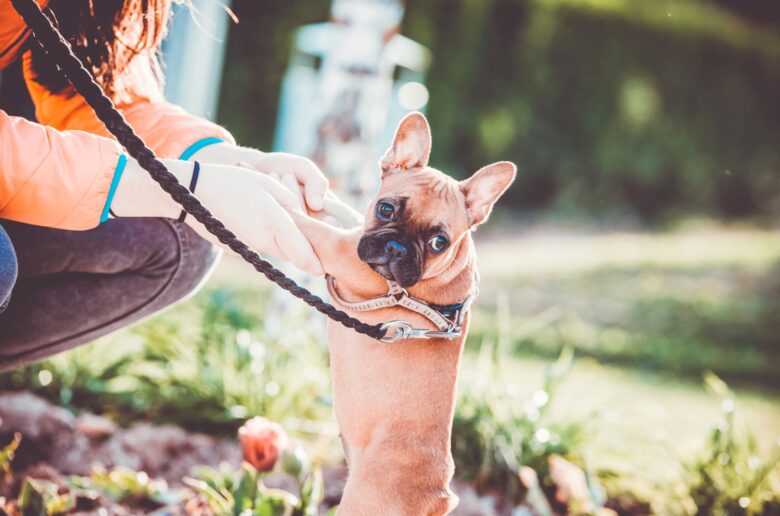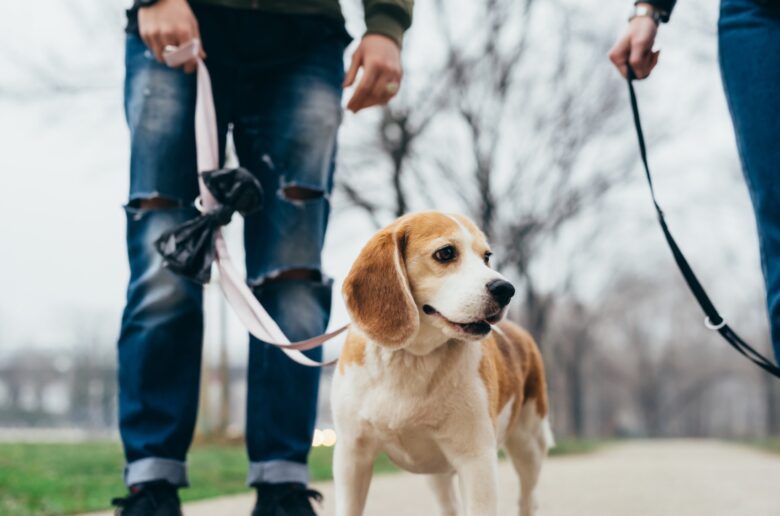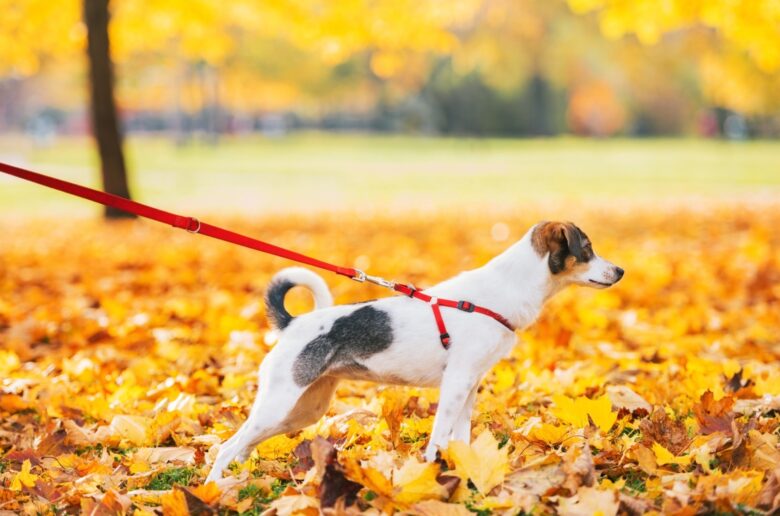Even the most polite dog needs to be on a leash sometimes. When traveling by public transport or trains, this is a legal obligation, and when walking around the city, it is good to keep our four-legged pet closer by crossing the street using personalized leather dog collars and leashes.
So how do we choose a leash that will satisfy all our needs? We advise!
Contents
Big or small?
Regardless of whether our four-legged animal is a pit bull or a spitz, its behavior is determined by training, as well as the character of the animal. In our house, there may be a kind giant or a small ball of hatred. What does this have to do with leashes?
The best dog leashes are a safety measure when walking with our companion. If our dog is aggressive towards other animals, we should put him on a short dog leash to be able to react quickly to different dangerous situations.
We, as owners, are responsible for our pets and must apply the principle of limited trust to other pets and their owners.

Source: canva.com
When to choose a short strap and when to choose a long one?
Short dog leash is also suitable for young, active dogs during training. Thanks to this, they will be able to get used to spending time near their guardian and responding to commands. As you know, juveniles are much more energetic and can cause more problems, so it may be wise to choose an option that provides more control.
Buying the best dog leash of high quality with a built-in flashlight would be ideal. Firstly, you can independently and quickly adjust the required length to control your pet better, and also watch your pet with a flashlight in the dark!
Long leashes for dogs are a good solution for dogs that need more space and won’t get in the way of other animals. Thanks to them, they can move freely over a larger area and actively play at a safe distance from their guardian. Long training leashes for dogs is better for a dog activity.
Long leashes for dogs are usually automatic leashes that allow you to adjust the length of the leash, so we have constant control over how much freedom our dog has.
What else do you need?
Of course, the leash will not be attached to the dog’s skin – we need an appropriate collar that will not harm our pet. Veterinarians urge people to stop using spiked traps that hurt animals and can severely damage a dog’s throat.
The best collars are those that leave the dog a small margin of space, thanks to which we can safely inform the dog about a change of direction or distract him from other walks without causing discomfort to our pet.
The best dog leash, combined with a safety dog collar, should work in all conditions and allow you to walk calmly without worrying about your pets’ health. Every pet deserves comfortable conditions on a walk.

Source: canva.com
How to choose a leash for a dog?
We figured out the types of ammunition, and now you need to understand what to look for when choosing an accessory.
Purpose of purchase. Decide why you are buying a leather leash:
- for daily long walks;
- trips to exhibitions;
- or it should be a dog training leash.
One accessory may not be able to handle multiple tasks.
Consider the weight and dimensions of the dog. Smaller dogs, like the Chihuahua, need light, weak leashes. And for large breeds, reliable, vital accessories that can withstand a lot of weight and force are required.
Pay attention to the nature of the dog. If the dog does not follow commands well, likes to break out, or behaves restlessly on walks – choose durable ammunition to hold the pet.
Check out the carabiner. It should not stick and be flimsy, and weak carbines quickly break from strong jerks.
Purchase a spare leash in case the custom leash gets damaged or dirty.
Advantages and disadvantages of short leashes
Short ones, typically ranging from 4 to 6 feet in length, have their own set of advantages and disadvantages when compared to longer leashes. One advantage is that they give the owner more control over their pet, making it easier to keep them close in busy areas or situations where the pet may become distracted. They also provide better communication between the owner and his best friend, making it easier to give commands and signals. They are also easier to handle and store, as they take up less space than longer leashes.
However, there are also some disadvantages to using them. One of the biggest drawbacks is that they can limit their freedom of movement, making it difficult for them to fully explore their surroundings or to run and play. This can lead to frustration or even behavioral issues in some of them. Additionally, they may not be suitable for larger breeds or dogs with a lot of energy, as they may feel restricted or uncomfortable with the shorter length.

Source: canva.com
How to choose a leash for a puppy?
For walking, use the best leash for a puppy of 1.5–2 meters long. It gives freedom to the pet and, at the same time, allows the owner to control the baby. Pay attention to the material: a curious puppy should not chew or tear the leash. Change the accessory as your dog grows.
Pets need to walk every day, and periodically visit the veterinarian. A properly selected leash will help make walks and trips comfortable and safe.
Conclusion
In conclusion, choosing between a long and short leash for your pet ultimately depends on your needs and the temperament of your pet. While a long one can provide your best friend with more freedom to explore and exercise, it also requires more control and supervision to ensure their safety. On the other hand, a short one provides greater control and keeps it close to you, making it ideal for situations that require more focus and discipline.
